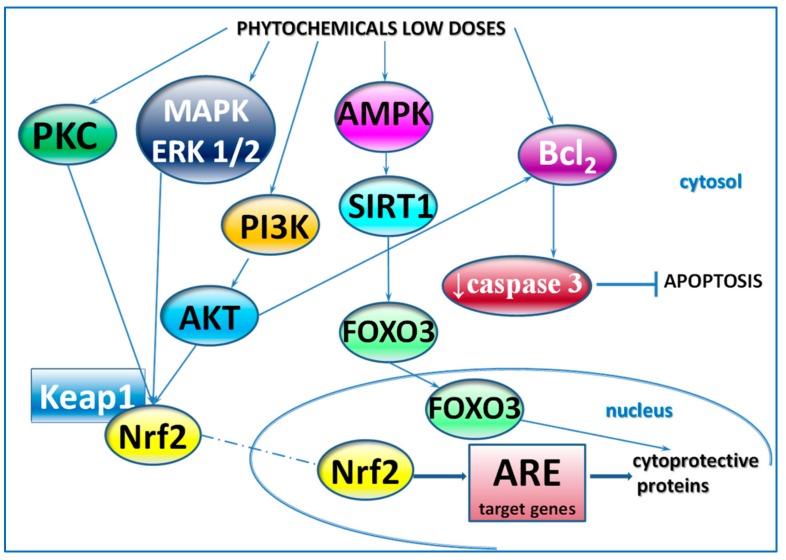Figure 2.
Examples of mechanisms involved in the cellular response to low doses of phytochemicals–on the basis of findings presented in the current review. Phytochemicals can activate kinase cascades, including PKC, MAPK/ERK1/2, PI3K/AKT, which play a critical role in the regulation of cell growth, proliferation, survival, and apoptosis. Downstream effector of these kinases is transcription factor Nrf2, which is released from the complex with keap1 and translocates to the nucleus, binds to ARE and stimulates the expression of cytoprotective proteins, e.g., antioxidant enzymes and phase-2 proteins. SIRT-1 plays a key role in the cellular response to various stressors by activating transcription factor FOXO3, which induces genes encoding cytoprotective proteins. The transcriptional activity of FOXO3 is modulated by both AMPK and SIRT-1. PI3K/AKT is the major pathway mediating cell survival and inhibiting apoptosis. Bcl-2, a pro-survival, anti-apoptotic, and cytoprotective molecule, can be activated directly by chemicals or via PI3K/AKT pathway. AKT—serine/threonine protein kinase; AMPK—AMP-activated protein kinase; ARE—antioxidant response elements; Bcl2—B-cell lymphoma 2; ERK—extracellular signal-regulated kinase protein-serine/threonine kinase; FOXO3—forkhead box O3; KEAP1—Kelch-like ECH-associated protein 1; MAPK—mitogen-activated protein kinase; Nrf2—nuclear factor erythroid 2-related factor 2; PI3K—phosphatidylinositol 3-kinase; PKC—protein kinase C; SIRT1—sirtuin1.

